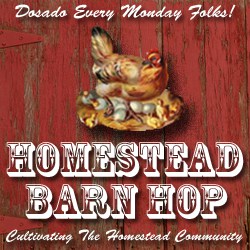As I discussed in an earlier post, we have tried to use
passive solar principles to position our new (secondhand) house at Cheslyn Rise to take
advantage of the sun’s heat in winter and to shade the house in summer. The other technique we can use to regulate
the temperature in the house is insulation.
Under Queensland building law we actually have to put a certain amount
of insulation in the house anyway, so the only decision to be made was what
kind and if we would add any extra insulation.
My first thought was to use a natural fibre, so I started to
investigate options. As the use of insulation
is mandated and must be a certain ‘R value’, we couldn’t just use any old scrap
wool available, it has to be a proper tested insulation product. Our options seemed to be:
- Sheep’s wool
- Cellulose
- Rock wool
- Glass wool (fibreglass)
- Polyester (not natural, but still an option)
When I started to research sheep’s wool I found that all the
products available in Australia are only 70-80% wool, stabilised with polyester. Even though this polyester is mostly recycled
material, I just don’t feel comfortable mixing natural and synthetic
fibres. As I discussed in my post of Permaculture- produce no waste, you end up with a product that
can neither be recycled or composted, it will be literally rubbish when its no
longer useful as insulation.
Cellulose is made from recycled newspapers and has to be
sprayed into the roof cavity. This is
useful for awkward spaces, but very difficult to adjust once its been
sprayed. Also, I assume that its treated
with fire retardant chemicals (otherwise it’s a massive fire hazard up in the
roof!). It defeats the purpose of using
a natural product if its full of chemicals!
Glass wool and rock wool (or mineral wool) are extruded glass and rock
respectively, known collectively as mineral fibre. Rock wool can withstand higher temperatures,
and its better for acoustic insulation, but is more expensive. Both are natural products, made from mined
silica and basalt respectively (with various additives) and can be recycled by
melting them and reprocessing into more fibres (although there is no recycling plant in Australia currently, it is recycled in Europe).
The main disadvantage of using mineral fibre insulation is that the small fibres can irritate the skin and lungs, so its best to install in cooler weather, with full overalls and dust masks. Lucky for us, this is also the cheapest option, that doesn't often happen! And we can just buy them from the local hardware store (and although some product is imported, as far as I can tell, there is also some insulation manufactured in Australia, which would be my preference).
Have you researched or used a natural insulation product?


Have you researched or used a natural insulation product?




I have investigated the cellulose option, and have received a quote - it is definitely affordable, and will be the route we will be going. We visited an exhibition a few years ago and they had a demo set up - it definitely works - and works well. It is also vermin deterrent - so I know any field mice which may find their way up to our roof, won't be keen to make a home there :)
ReplyDeleteHere in New Zealand pretty much everyone used Pink Batts they are great in principle as they are made from 80% recycled glass however the fibres are held together by some kind of resin which I'm not sure how "green" this is. either way it is better than polystyrene or some other choices out there. You can also buy wool here which I like the idea of so will look into that next time. Mx
ReplyDeleteThank you for researching something on my 'must look into' list Liz ;-)
ReplyDeleteThat's a shame about wool insulation being mixed - but I imagine it would be super expensive either way.
Glad the sensible choice was also the cheapest option. A rare outcome :-)
Thanks for the comments, it can be tricky to make a sensible choice, taking into account source of material, recycling potential, application, price etc etc!
ReplyDeleteKudos to you for seeking out the greenest option- it's certainly not easy when it comes to building products like insulation. In my hometown of Charlottesville, spray foam insulation has become a popular choice, and we have actually used it in our own home. It can provide an R-value of up to 6.7 per inch used, and does wonders for improving our home's energy efficiency when it comes to heating and cooling. Thanks for sharing your experience. I look forward to reading more about what option you settle on!
ReplyDelete